In a world where we are more connected than ever, it seems paradoxical that loneliness and feelings of isolation are on the rise. This work is dedicated to the growing phenomenon of loneliness and its significance in modern society. It focuses on the psychological and physical effects of loneliness and the differences between actual and perceived loneliness. The biological and psychological foundations of social bonds are analysed to better understand the human need for closeness and connection. The impact of technological developments such as digital media and artificial intelligence on social interactions and the extent to which they can alleviate feelings of loneliness will be critically examined. While technologies offer short-term relief, the importance of genuine interpersonal relationships remains irreplaceable.
The practical part of the work is an interactive installation that visualises the human need for connection. The installation shows how loneliness arises when social relationships are lacking, and the positive effects that quality social interactions have on well-being.
1 PROBLEM AND GOALS
Loneliness is a growing problem with far-reaching consequences. It describes the painful feeling that social relationships are not enough or not of the desired quality. This 'social pain signal' has evolutionary roots, but in modern times it can become chronic, damaging both mental and physical health. Studies show that loneliness increases the risk of depression, cardiovascular disease and even dementia. It weakens the immune system and is associated with an increased risk of death. Socially, loneliness leads to isolation, mistrust and reduced social solidarity, which can threaten democracy and social structures. There are many causes: individualisation, geographical isolation, financial barriers or the taboo of the subject.
The aim is to bring the inner emotional states to the outside world and to break the taboo of loneliness. It is intended to show the viewer how loneliness arises when this need is not met, and the impact that quality social interactions have on our well-being.
2 PROJECT
The idea of the project is to develop an interactive installation that makes the human need for closeness and connection visually tangible. The aim is to visualise the process of forming a bond, while at the same time the actual interaction - hugging - creates a stronger social bond between the participants and ideally releases the 'bonding hormone' oxytocin, which increases our sense of well-being.
The visualisation takes the form of a system-based animation that changes in real time as visitors interact, with the core of the interaction being a camera-recorded hug. Visitors influence the elements through this physical gesture. The elements 'warm up' and change shape and movement as a result of the interaction. If the hug does not take place over a longer period of time, the elements begin to 'wither' and the overall atmosphere becomes cooler and more static.
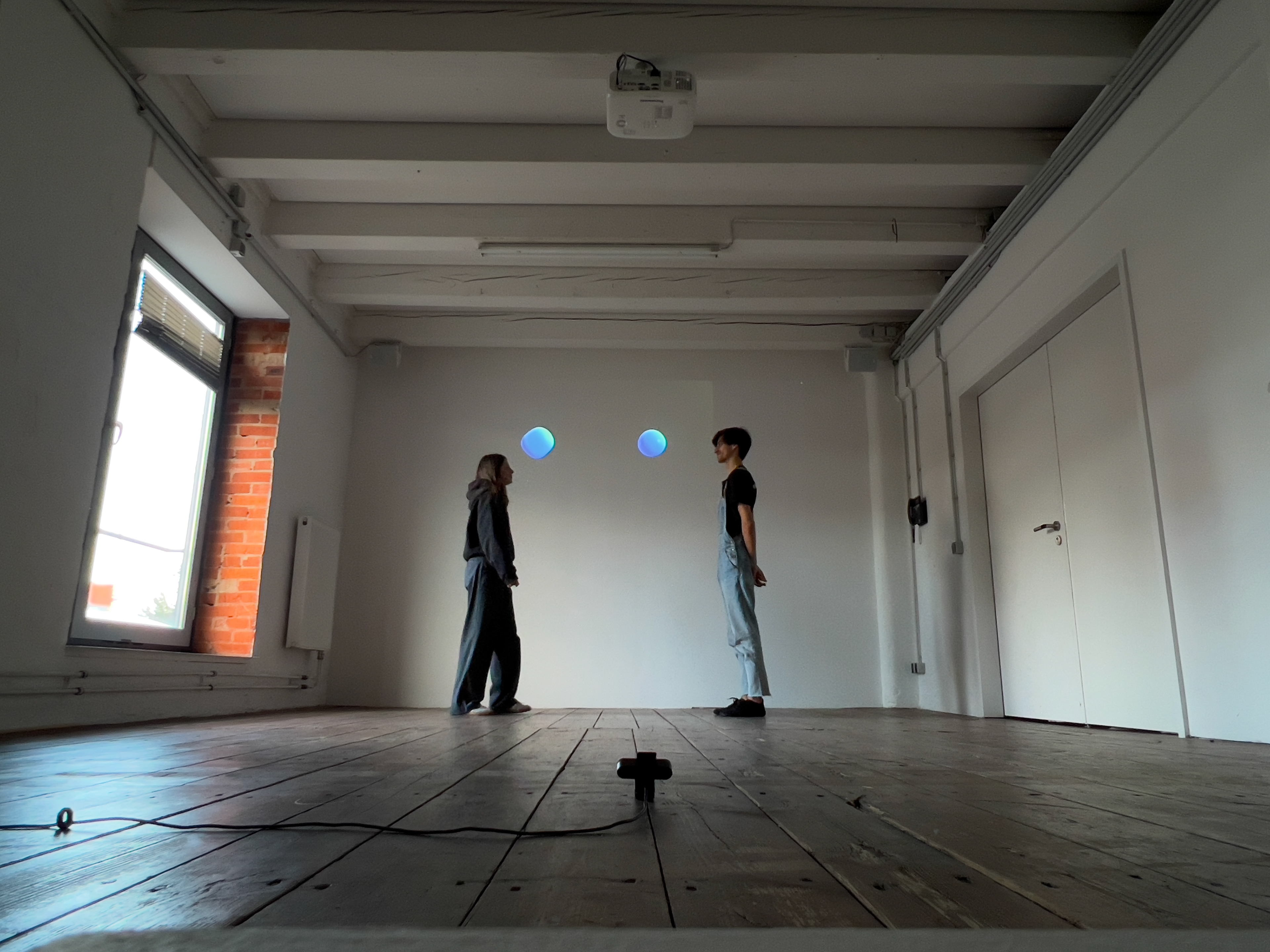
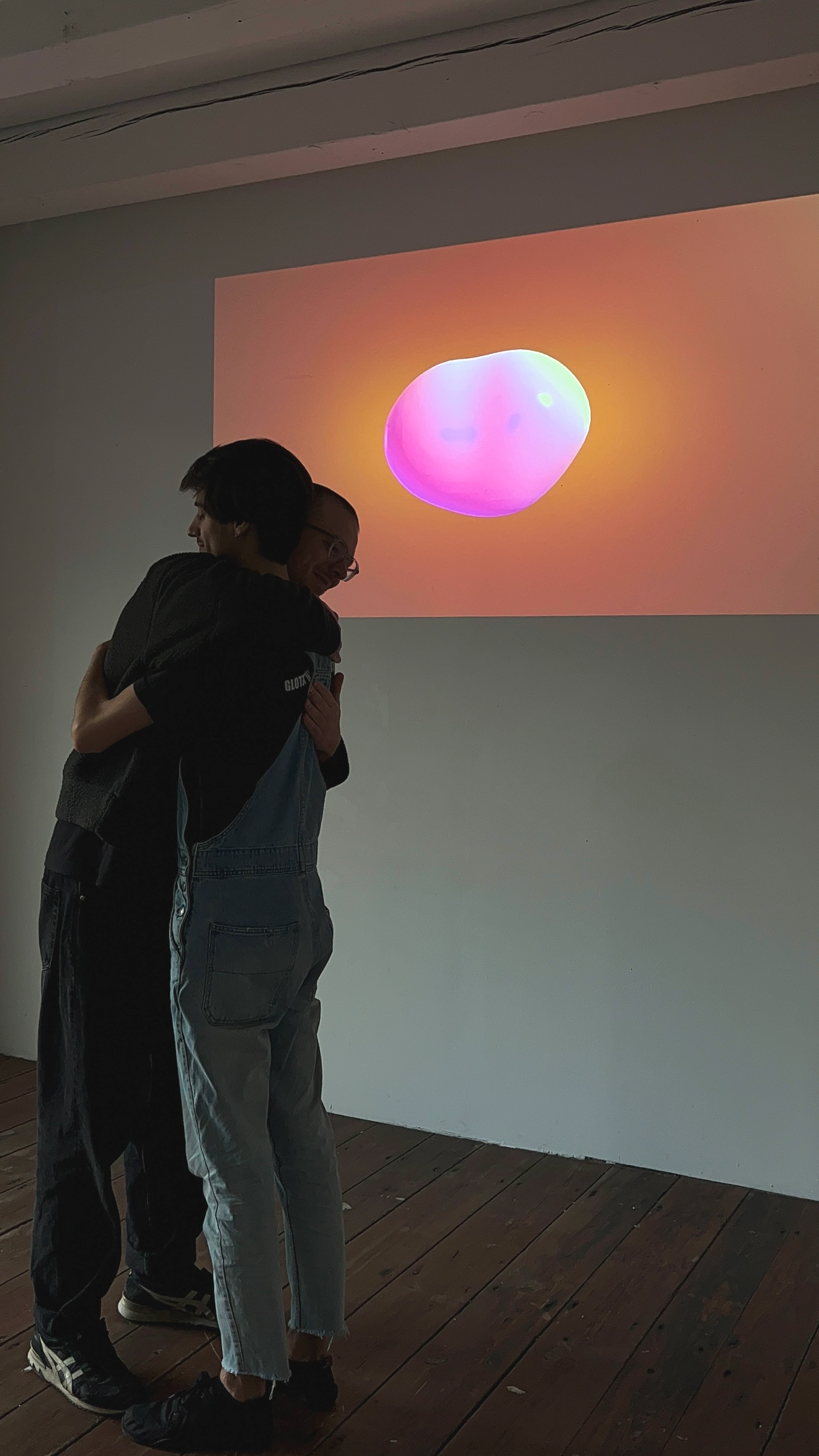

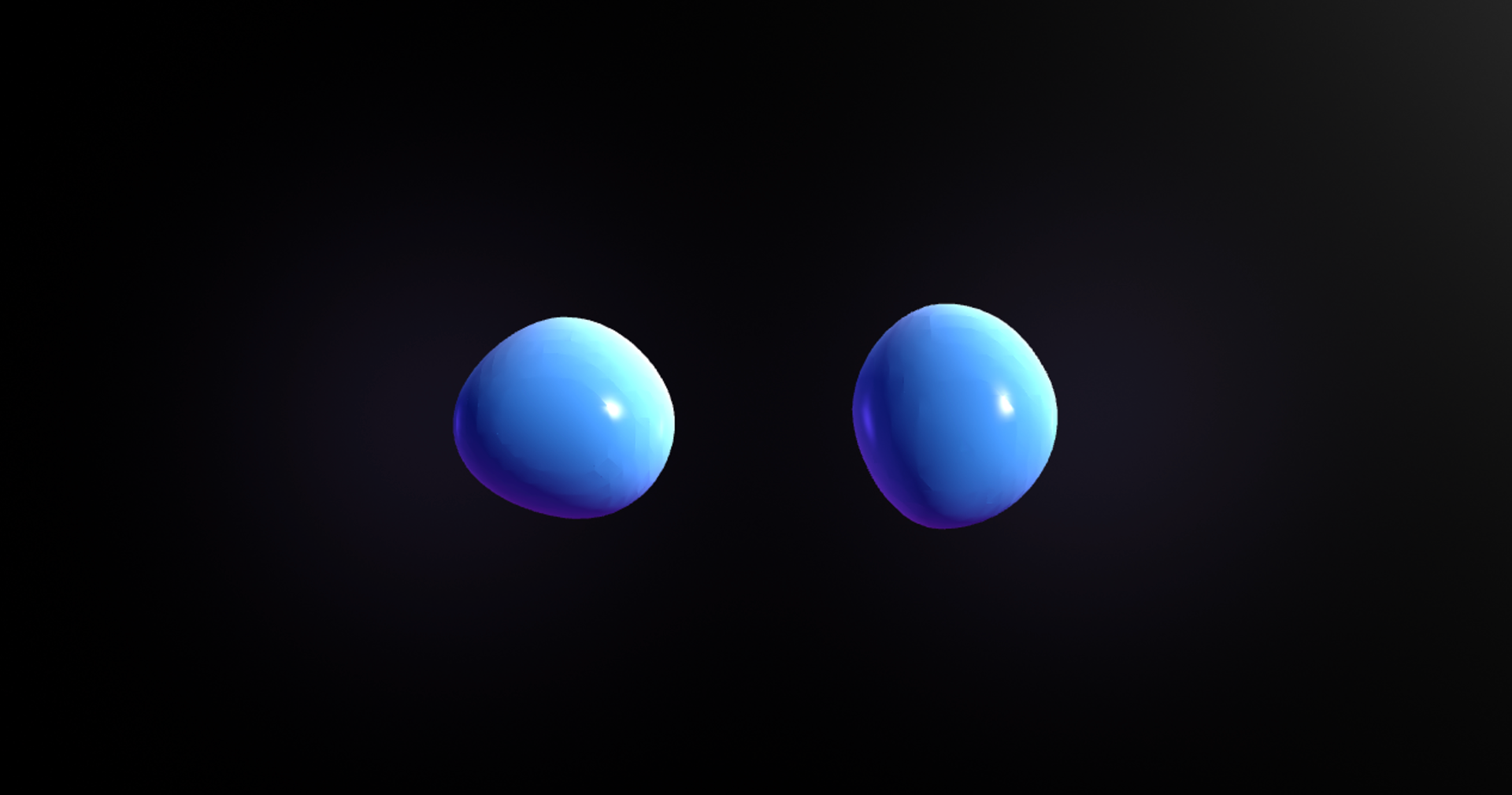
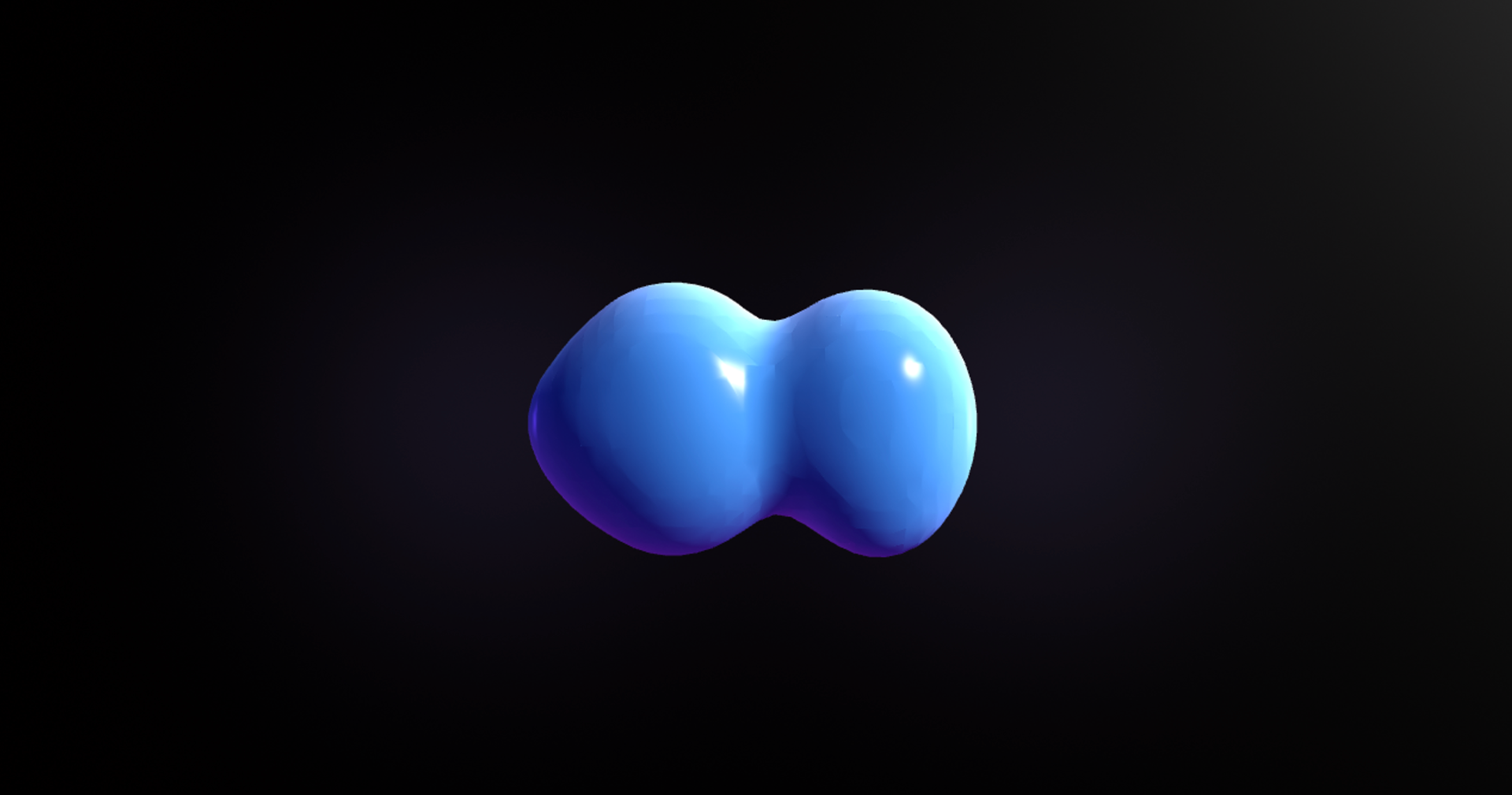
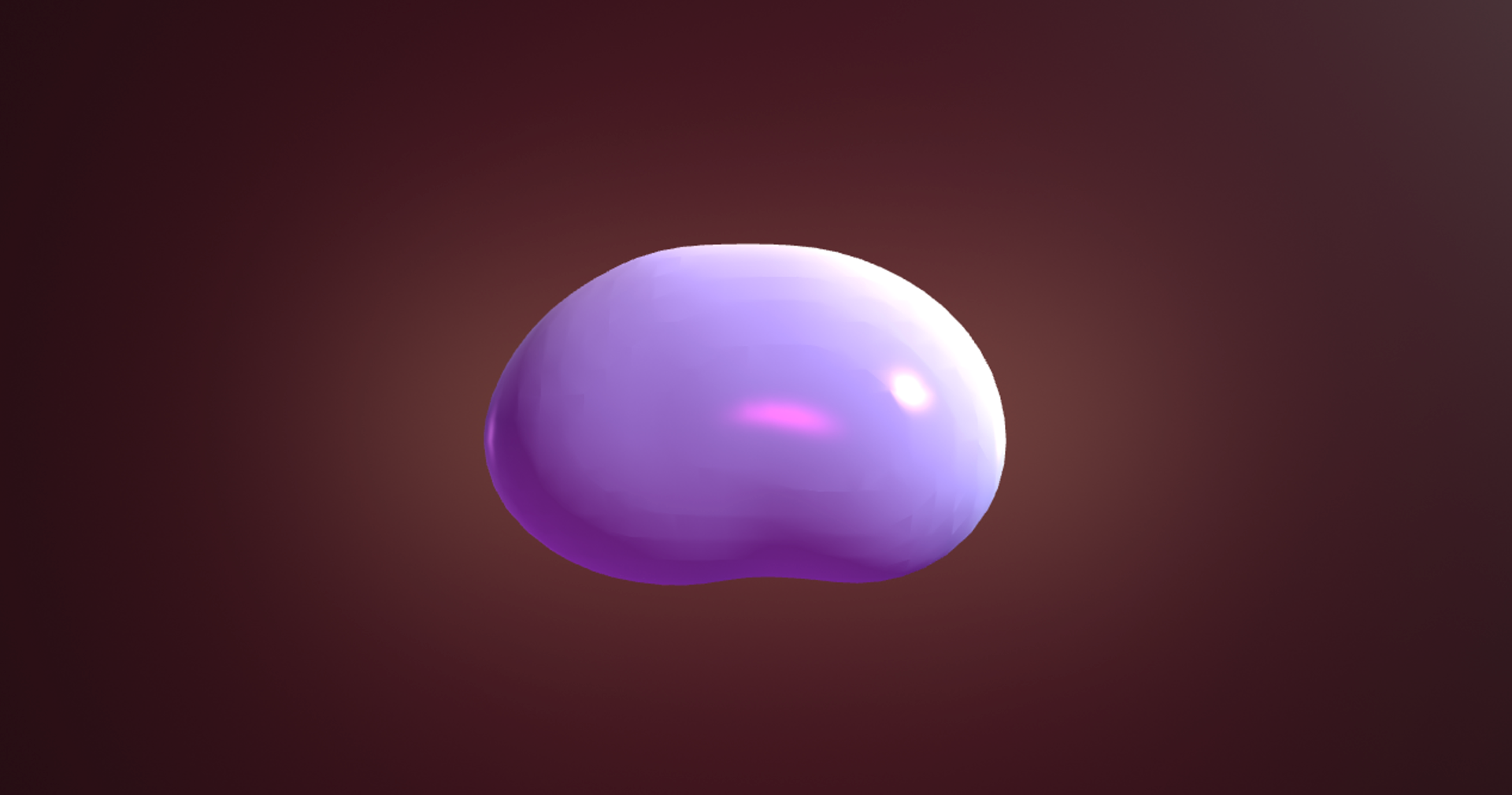

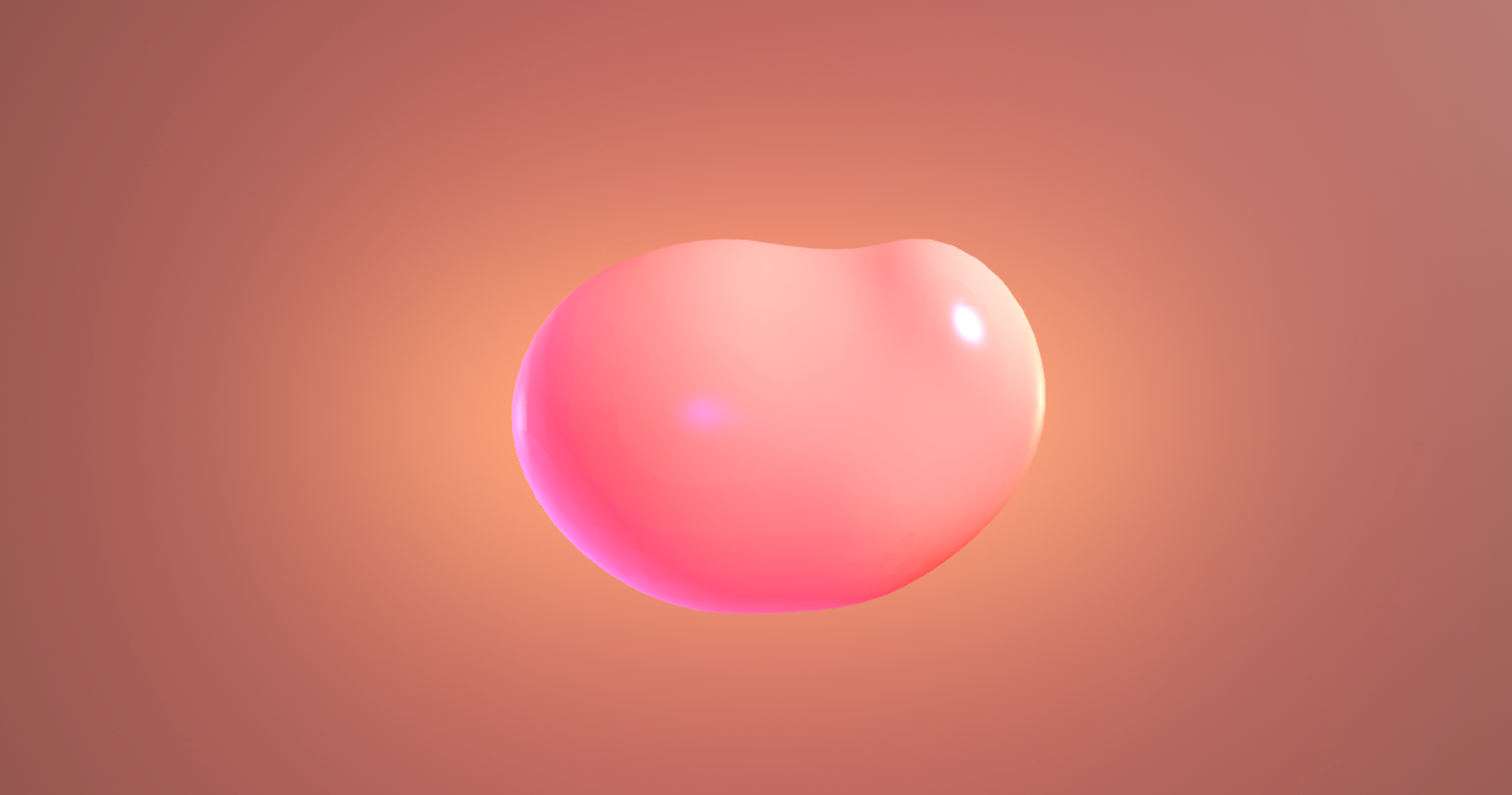
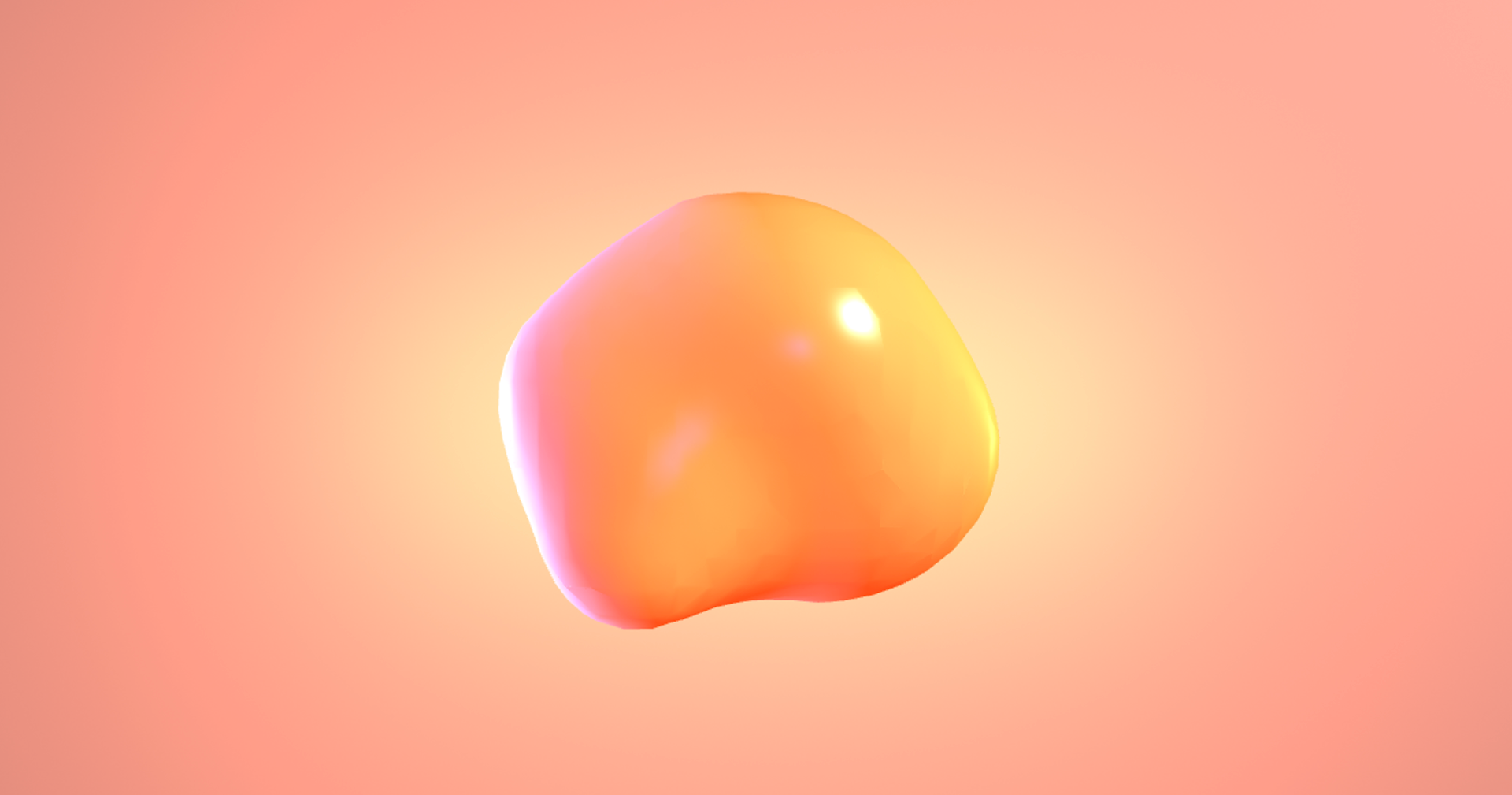

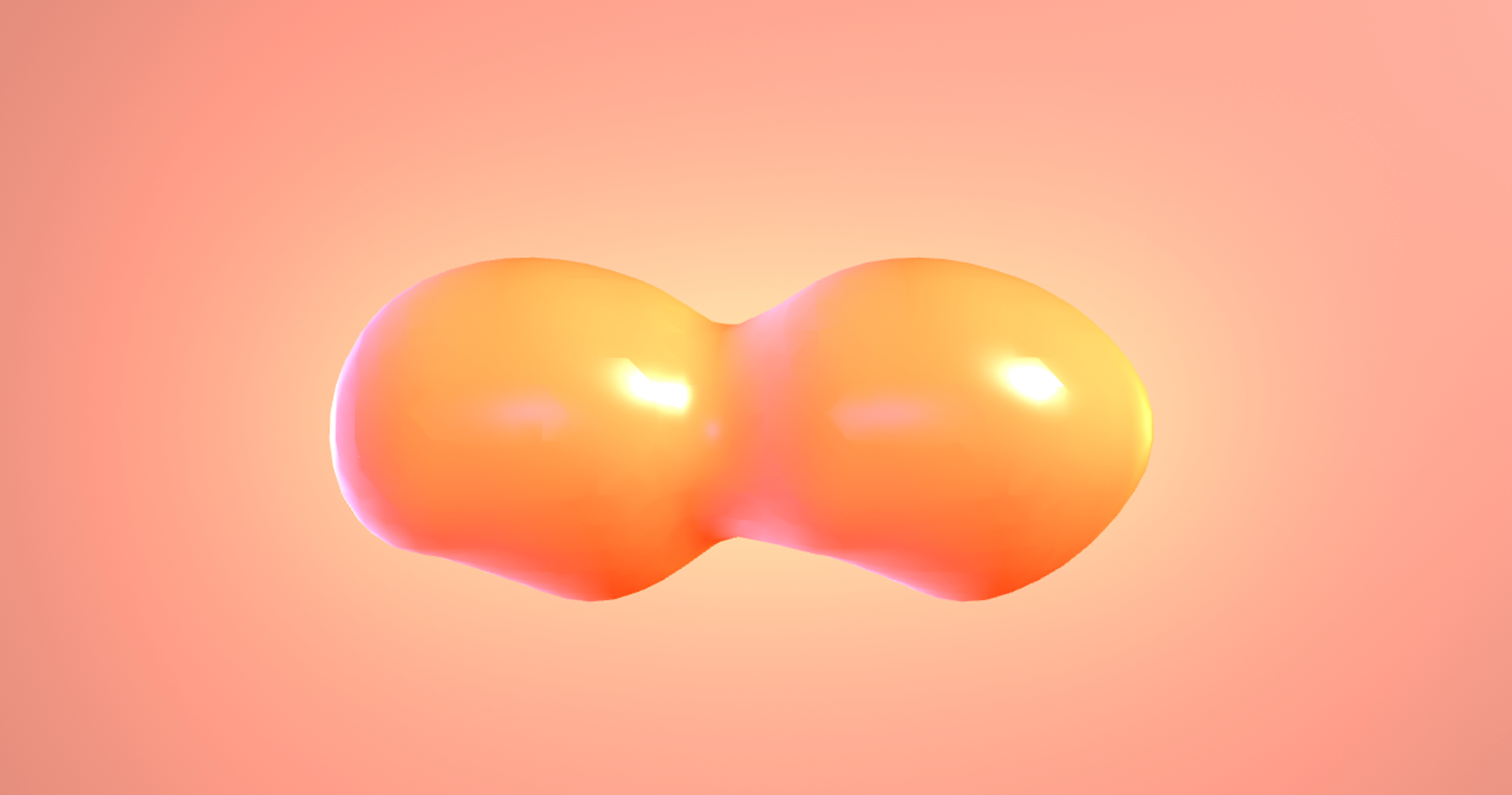
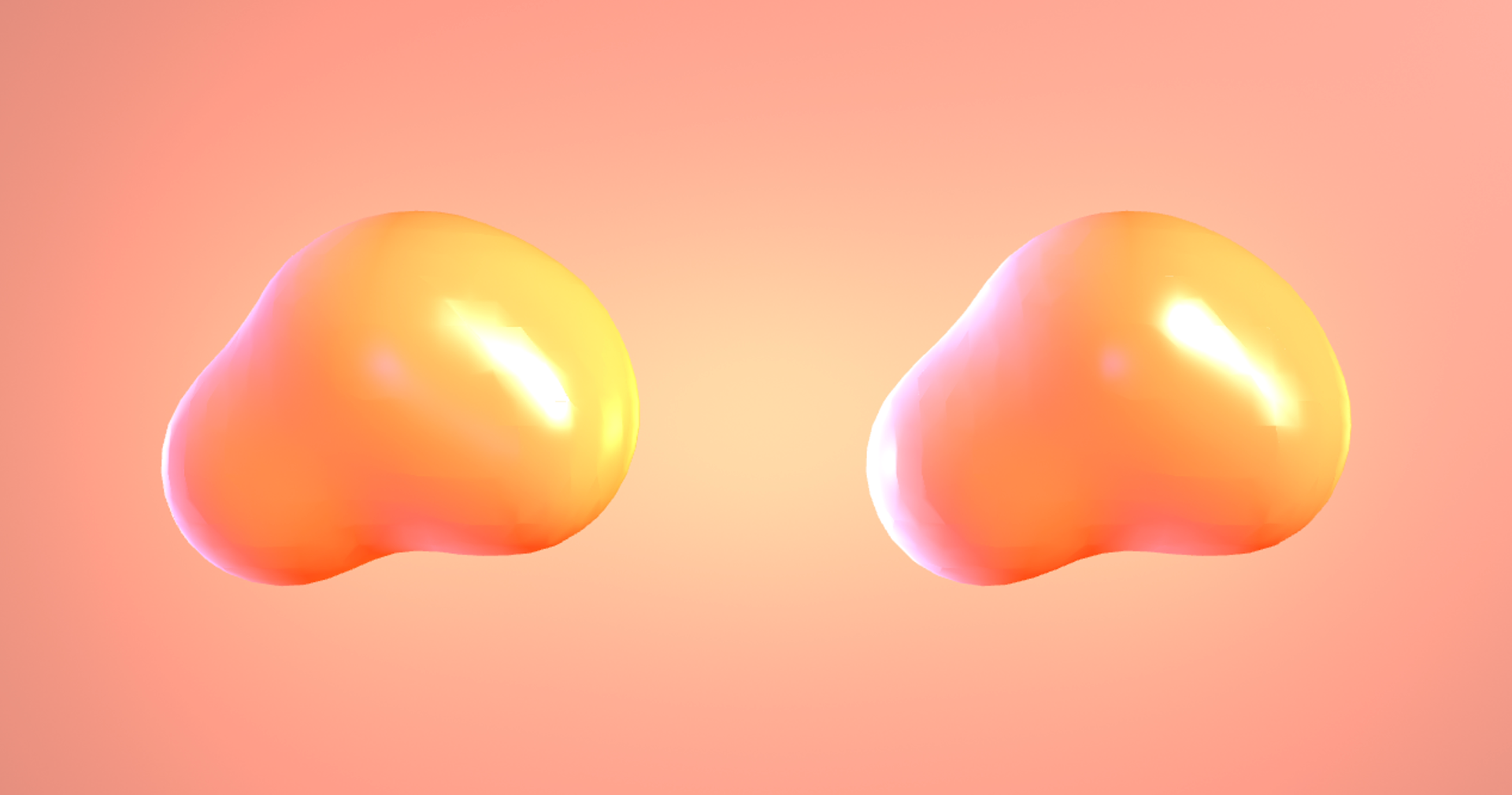
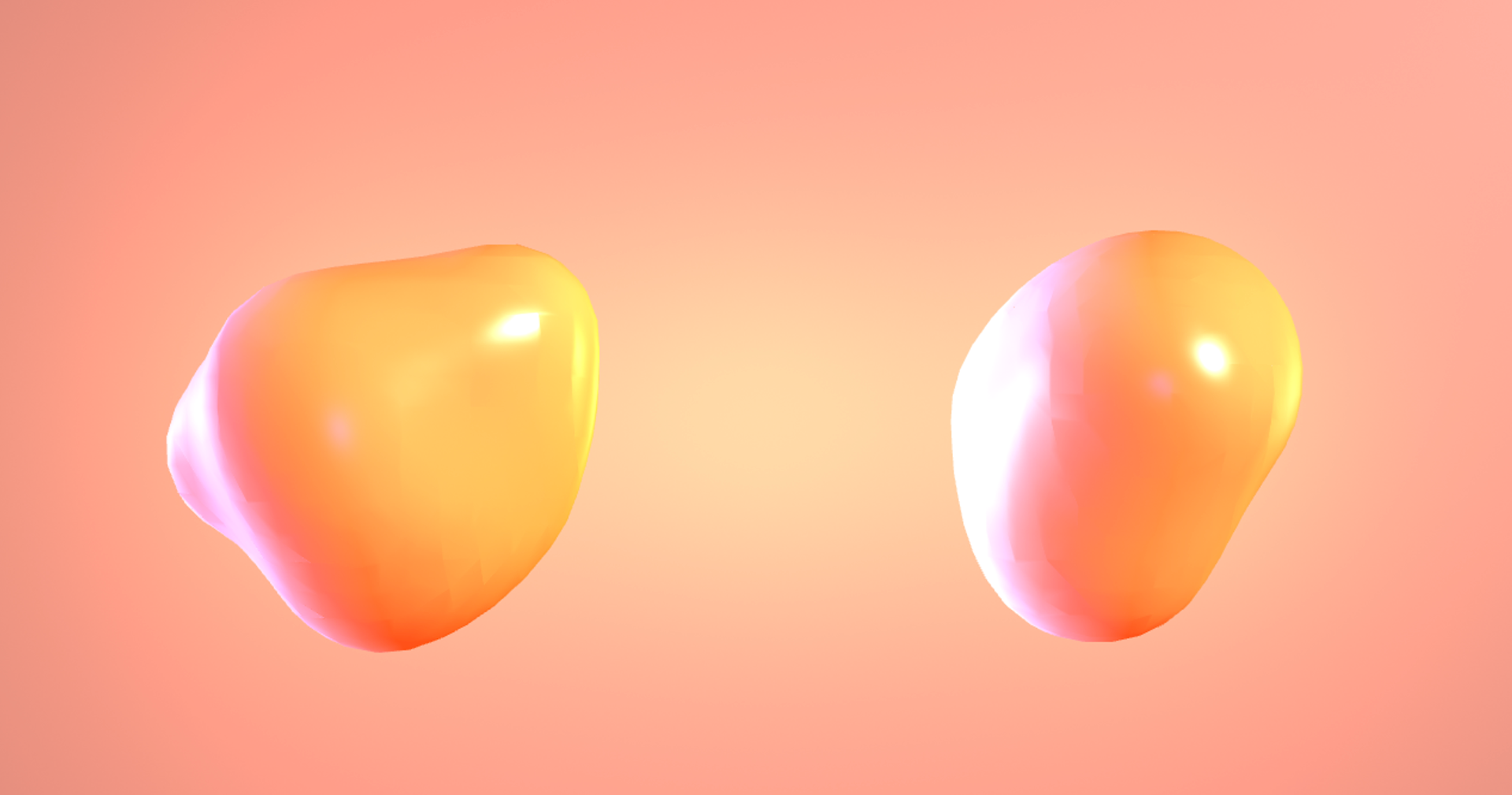




The visual part of the installation reflects the theoretical findings: at the beginning, when no interaction has taken place, two small, cool-coloured and rather calm elements appear. They represent the inner states of two people. However, as soon as an embrace is initiated, these elements merge into a single unit and begin to act dynamically and vividly. The colour climate changes from cool to warm, and the longer the embrace lasts, the more intense and lively the movements become.
At the end of the embrace, the two elements separate, initially moving synchronously to symbolise neural synchronisation after an interaction, before gradually moving asynchronously. If there is no further interaction for a longer period of time, the elements begin to shrink, their movements slow down and the colour climate returns to a cool tone to illustrate the 'withering away' of social bonds.
In addition, the environment of the installation changes to show that high quality interactions can have a positive impact not only on ourselves but also on our surroundings.
3 Realisation
TouchDesigner is used for the technical realisation of the installation. The visitors' hugs are tracked using Pose Estimation with a conventional camera and tracking framework. Pose Estimation is a computer vision technique used to localise the main joints of the human body in images or videos in order to analyse posture or body movement. Different types of models based on machine learning or specialised computational approaches can be used. These models are trained to identify and track body parts in visual input. As the installation requires the tracking of multiple people, the MoveNet Multipose model is used. It is compatible with TouchDesigner and a plug-in is available. The MoveNet model was chosen because it has proven to be the most reliable model for multi-person tracking.